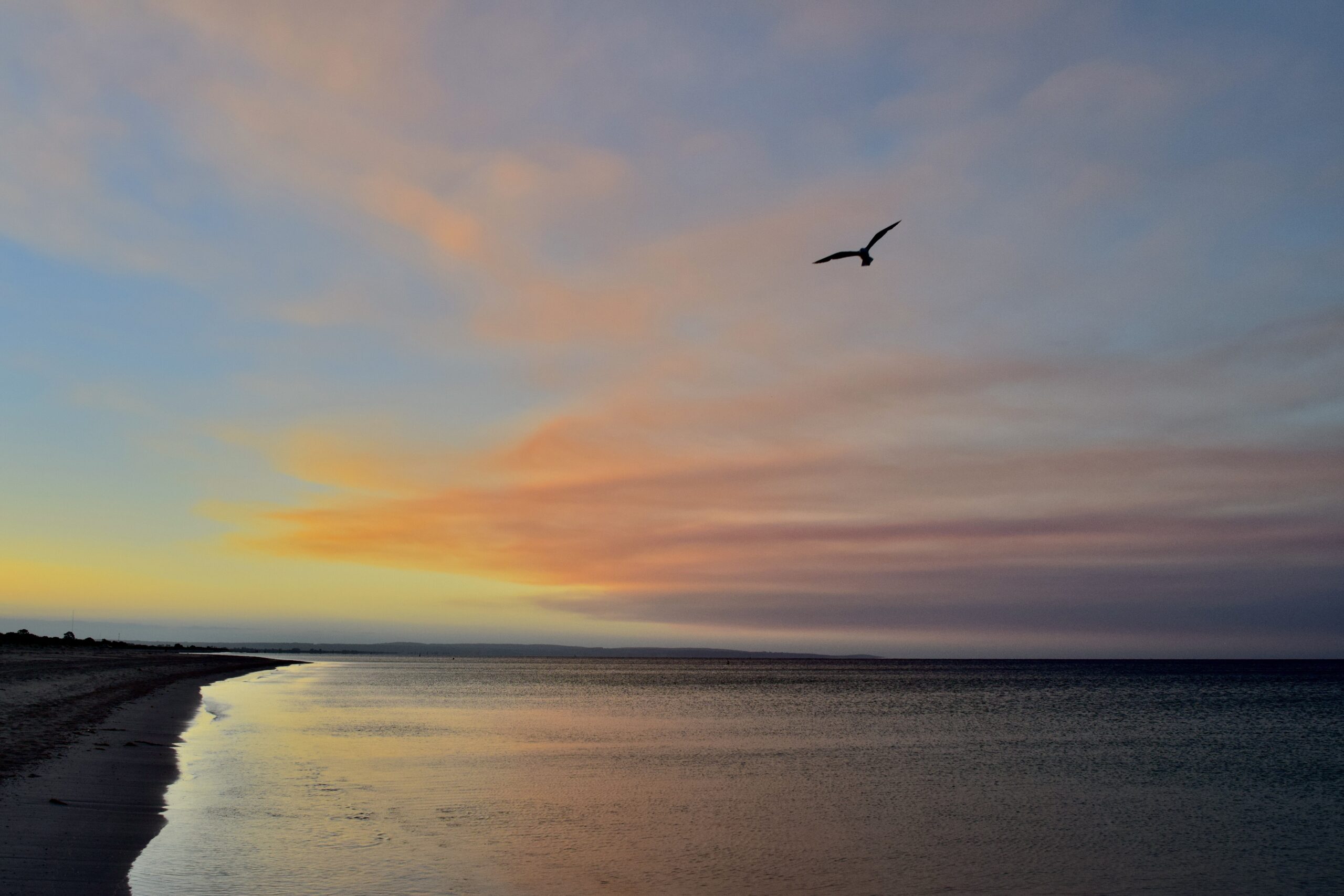Call us biased, but we think WA has some pretty spectacular sunsets.
But what, exactly, makes for a good sunset? More importantly, can we predict one before it happens, so we know whether to make a dash to the coast?
It’s the way it scatters that matters
First, a quick reminder of why the sunset is colourful in the first place.

Sunlight is made up of every colour of light combined, but each colour travels through our atmosphere differently.
Different amounts of air, and different atmospheric conditions, change which colours make it through. During the day, when the sun shines straight down, it’s mostly blue light bouncing around our sky. As the Earth turns, the sunlight travels through more atmosphere – so at sunset (and sunrise) it’s the orange and red wavelengths that make it to us.

So thanks to some simple geometry and complex physics, we can be pretty sure blue skies and red sunsets will physically happen every day. But how do we tell if they’re going to be … y’know, spicy?
For that, we’re going to need a little more drama.
Cloud and clear
While the angle of the Earth and the Sun set the stage, it’s the clouds that puts on the show.
To find out exactly what we’re looking for, we talked to Neil Bennett from the Bureau of Meteorology.
The first thing we’re looking for, he says, is height.
“Mid to high level clouds will often give you some pretty spectacular sunsets and sunrises,” Neil says.
High clouds, made of ice, tend to reflect colourful light early and are less likely to block the sky. Mid level clouds, made of water, can block light to cast dramatic shadows. Low level clouds, though, tend to be too thick.
We’re also looking for some shape and variety.
“Altocumulus and cirrocumulus clouds will be better because you’ve got the little breaks there, and you can see a little more colour and definition, rather than the very thick level altostratus and cirrostratus clouds.”
(If you’re not across your cloud lingo, that means we’re looking for fluffy, rather than flat.)

“You want the sky to be mostly clear, with just a little bit of cloud left,” Neil says.
The Sunset Coast
Fortunately for us in WA, ideal sunset conditions are pretty easy to come across.
“The typical weather pattern that will give you that will be a high pressure system,” explains Neil.
“In the summer in WA, we have a high pressure system which tends to sit off the south of the continent.”
That system might also bring a bit of a bonus to give WA sunsets the edge.
“In that position, you get easterly winds blowing from the interior across to the west coast.
“During the summer, that easterly brings dust and sometimes smoke from inland. The extra particles help to scatter the sunlight, and give us even more vivid colours.
“But I think it’s mostly because we’re looking out over the ocean during the sunset, whereas [people] in the eastern states are looking inland,” Neil says.
(Suck on that, Sydney.)
How do we know if it’s gonna get lit?
“It’s very difficult to predict that there’s going to be a good sunset,” Neil says.
“The first port of call is obviously the forecast. If it’s saying cloudy and rain, all bets are off.”

If it’s mostly clear, or partly cloudy and clearing, we’re good to go.
“And then the satellite imagery for the very short term – one or two hours out will give you a good guide as to whether you’re going to be in for a good, photogenic sunset or not.”
Keep an eye on the image for the amount of cloud near you, and on the notes beneath it to see what height it’s at.
The best thing you can do, though, is spend a whole lot of time looking up.















